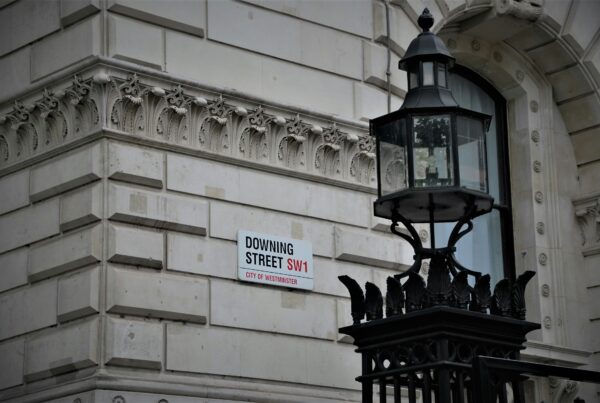Bright Blue, the independent think tank for liberal conservatism and home of conservative modernisers, has today published a new report, Pressure in the pipeline: decarbonising the UK’s gas.
The report argues that deeper decarbonisation of UK gas is essential if the country is to meet its current and likely future emissions reduction target. The report assesses how to decarbonise gas in the UK by increasing the supply of low carbon gases and by reducing demand for gas in the heat sector. It calls for new government investment and incentives for decarbonisation to be an urgent priority in Ofgem’s next price control framework for gas from April 2021.
Commenting Wilf Lytton, Senior Researcher at Bright Blue and co-author of the report, says:
“UK gas must be completely decarbonised during the coming three decades if this country is to meet its current and likely future legal emissions reduction target. But existing gas regulations that were designed decades ago, and a lack of investment and incentives, are hampering deeper decarbonisation”.
“Now, with time running out, the Government and Ofgem should approach the task of decarbonising gas with the same fervour as it has applied to delivering low carbon and affordable electricity. It is an urgent priority to ensure that Ofgem’s next price control framework from April 2021 includes stronger incentives and greater investment to support deeper decarbonisation.”
“In particular, Ofgem should introduce a new low-carbon gas obligation. This will enable the UK to decarbonise the gas network at the lowest possible cost, without distorting the market and removing the need to subsidise alternatives to natural gas.”
The Rt Hon Claire Perry MP, Minister of State for Energy and Clean Growth, said:
“I welcome this thought provoking work from Bright Blue. Through rapid progress in decarbonising power generation, the UK has grown its economy whilst cutting carbon faster than any other country in the G7; but if we are going to build on this success, we need to get serious in tackling heat. This welcome report points to policy solutions that build on the strength of our natural gas sector where we are a world leader, and the hugely valuable assets of our gas networks.”
“Hydrogen and Biomethane can help deliver serious climate action through our existing infrastructure, keeping consumers on board and maintaining the flexibility and resilience provided by the gas system.”
Antoinette Sandbach MP, Member of the House of Commons Business, Energy and Industrial Strategy Committee, said:
“Decarbonising our extensive gas network is an important priority. Over 80% of UK homes depend on gas for heating and cooking. Given the uncertainty about the future of other aspects of UK energy provision, it is clear that gas is going to be a substantial part of our energy mix for decades to come.”
“This report is a significant contribution to the task of planning Britain’s energy future. It offers a potential roadmap to a more green gas system which also puts the interests of consumers first. The report also highlights the importance of more network innovation funding in developing practical solutions for decarbonisation. I hope that ministers take these proposals on board.”
Simon Clarke MP, Member of the Treasury Select Committee, said:
“If we are serious about meeting our Paris climate commitments – and still more so if we want the UK to become carbon neutral by mid-century – then we are going to need equally serious and innovative thinking. This report from Bright Blue sets out a series of steps to decarbonise UK gas and I hope will be taken by ministers as a blueprint for the next stage of reform.”
“In my own home region of Teesside, the Government has just committed to a £5bn ‘clean gas’ facility with carbon capture, usage and storage as an integral part of the vision. There is a great and growing appetite among Parliamentarians for clear-sighted and ambitious energy policy-making and the time to act is now.”
Bright Blue’s main recommendations in Pressure in the pipeline are:
- Establish a ‘low carbon gas obligation’ on gas suppliers in the next price control framework from April 2021 to incentivise the injection of low carbon gas flowing in the UK gas network. This would include a requirement for gas suppliers to deliver a steadily increasing proportion of low carbon gases – which includes biomethane, bioSNG and hydrogen – to the network. The proportion of low carbon gas injected into the gas network, and the trajectory for this over time, should be consistent with meeting the UK’s current and likely greenhouse gas emissions reduction target. Compliance with, and implementation of, this new ‘low carbon gas obligation’ would be overseen by Ofgem.
- Make decarbonisation of UK gas a priority for Ofgem in the next price control framework from April 2021, including by increasing the available funding through the ‘Network Innovation Competition’ and ‘Network Innovation Allowance’. The next price control framework should incentivise Gas Distribution Network Operators to invest in delivering infrastructure to support low carbon gas and installing smart pressure controls to optimise the distribution of low carbon gas. It should promote and reward the provision of technologies that support fuel switching, both within the gas network and by consumers. The funding available for all organisations in the gas network through Ofgem’s ‘Network Innovation Competition’ and ‘Network Innovation Allowance’ should be increased to a level that is appropriate to meet the requirements of a more deeply decarbonised gas network.
- Amend the Gas Safety (Management) Regulations and the Gas (Calculation of Thermal Energy) Regulations to enable a higher proportion of low carbon gases to flow in the gas network. The Gas Safety (Management) Regulations only permit up to 0.1% hydrogen (by volume) in the gas network. The Gas (Calculation of Thermal Energy) Regulations, which include Calorific Value (CV) requirements regarding the composition and price of gas, limit the use of different low carbon gases in the gas network. The current Gas Safety (Management) Regulations should soon be amended to reflect the technical capability of the gas network to accept higher intensities of hydrogen, as well as biomethane. The CV requirements on composition and price of gas should be responsive to increased usage of low carbon gases. Over time, the requirement to blend hydrogen, and biomethane in fact, with additives to achieve compliance with CV requirements should be In the long-term, the price of low carbon gases should not exceed consumer prices to natural gas in order to achieve compliance with CV regulations.
- The methodology for calculating the Energy Performance Certificate (EPC) rating of buildings should be changed. EPC assessment methodology currently uses data from a building’s smart meter to assess running costs. The determination of energy efficiency should be based primarily on the standardised use of passive heat or temperature sensing equipment to determine the thermal mass of a building relative to its surroundings.
- Introduce ‘Home Affordability Assessments’ (HAAs) alongside a new HAA rating. HAAs for new-build homes only will take account of a property’s sale price and maintenance costs over its expected lifetime, including annual energy bills. It should also provide an overall HAA rating. HAAs would provide to prospective homeowners and mortgage providers fuller information than the EPC about – and a more comprehensive and comparable rating on – how affordable a property is
- Increase the requirement for domestic gas boilers to be 95% efficient. The minimum Energy-related Products (ErP) requirement for domestic gas boilers should be raised from the existing level of 92% to 95% energy efficient as soon as possible.
- Introduce carbon life cycle assessment as part of public procurement procedures to drive the market for energy efficiency and renewable heat technologies in public estates. By including ‘green’ criteria as part of the standard tendering process, government estates could provide opportunities for energy efficiency measures and renewable heat technologies to gain a foothold in the market.
- Establish a new district heat network regulatory unit in Ofgem. A new regulatory unit should be established within Ofgem to oversee regulation of district heat networks and to develop suitable price controls for district heat networks. This will ensure that energy consumers supplied by district heat networks have adequate protection from uncompetitive pricing.




